Upland culture
UPLAND SUBCULTURES
GENERAL SKILLS- Ambush
- Camouflage
- Caving
- Climbing
- Cookery
- Direction Sense
- Distance Running
- Fletching
- Foraging
- Grappling Hook
- Hide Item
- Horticulture
- Hunting
- Jumping
- Leatherworking
- Loading
- Man. in H. Leather
- Man. in S. Leather
- Mapping
- Mining
- Rappelling
- Read Tracks
- Rope Mastery
- Set Traps
- Sprinting
- Stalk & Hide
- Stone Evaluation
- Stone Lore
- Stone-Crafts
- Stone-Working
- Time Sense
- Tracking
- Trap Building
- Weather-Watching
Legend
“The Upland, be it high plateau, mountainside, foothills, or cave dwellers. Have been the cradle of the most legendary heroes.”
Description
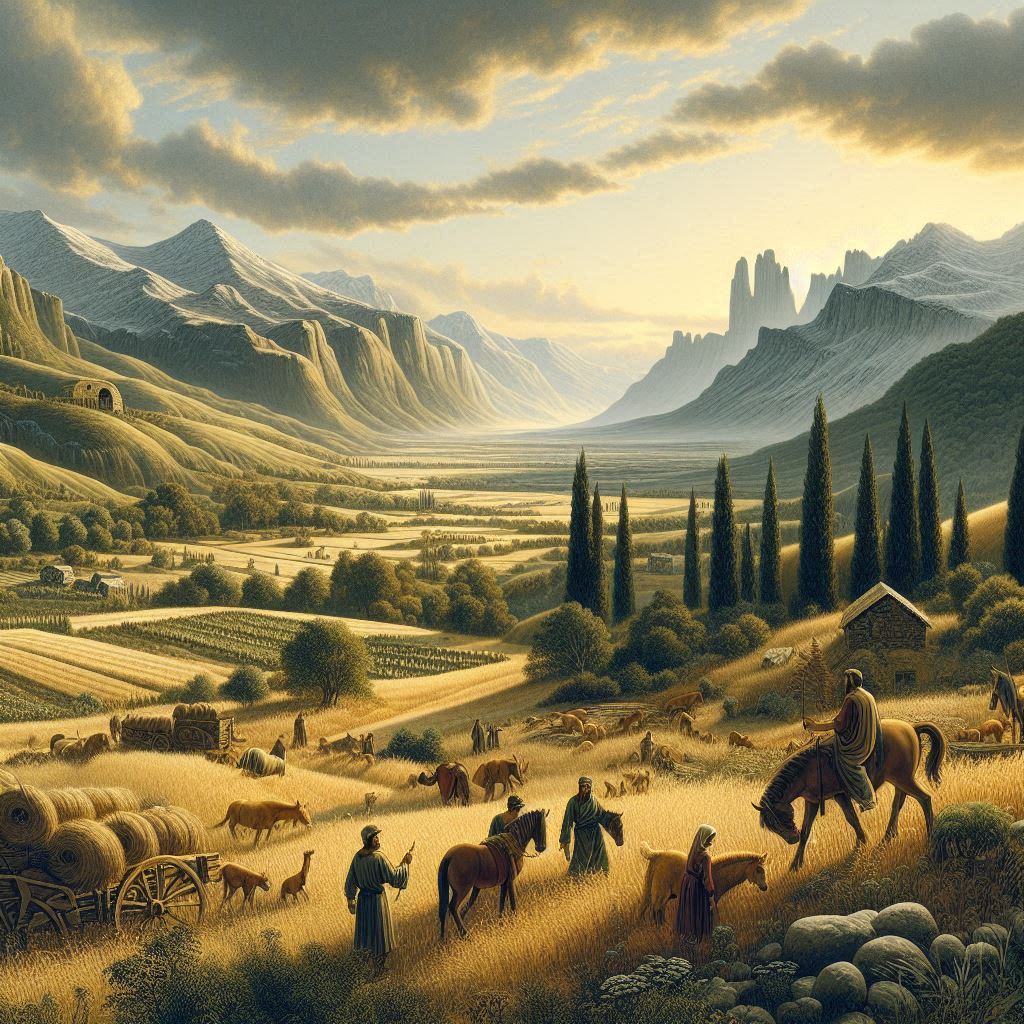
Uplanders are a diverse group of cultures united by their shared harsh, elevated environments. They are typically hardy, resilient people with a strong sense of community and interdependence. Physically, they often share adaptations to their environment, such as bigger lungs, cold tolerance, and a leaner build.
Lifestyle: Upland life is characterised by its challenges. Harsh weather, scarce resources, and isolated living conditions necessitate a strong work ethic, self-sufficiency, and a deep connection to the land. Their lifestyle is generally in settlements such as farmsteads, hamlets, villages, or towns. Sometimes they are nomadic or semi-nomadic, following the seasons and available resources. They are skilled miners, hunters, gatherers, and herders, with a deep knowledge of their environment.
Diet: Upland cultures have a diet that is shaped by altitude and terrain. They rely on hardy crops like grains, potatoes, and root vegetables and supplement this with mountain game, goats, sheep, and dairy products. Their diet is nutritious and filling, designed to support them in rugged environments where farming is difficult.
Traditions and Stories: They have rich oral traditions, passing down stories and knowledge through generations. Their tales often revolve around survival, courage, and mastery of nature. They have a strong reverence for their ancestors and the spirits of the land.
Marriage Pattern: Their marriage is often seen as a practical partnership agreement aimed at building strong families and safeguarding the survival of their community. Several spouses might be prevalent, depending on the specific culture, as a way to increase the chances of producing offspring in the harsh conditions.
Religion: Their religions tend to be animistic or polytheistic, with a strong emphasis on nature spirits and deities associated with the elements, mountains, and sky. Worship is often tied to the natural cycle, with rituals marking solstices, equinoxes, and other significant events.
- Religious system: Upland religions typically lack a centralised hierarchy. Shamans or medicine people often hold spiritual authority, acting as intermediaries between the people and the spirit world.
- God-Mortal Interaction: Divinities are often seen as distant but powerful forces of nature. Interaction with mortals is rare, but there might be occasional instances of divine intervention or oracles providing guidance.
- Rituals: The rituals are often centred around ensuring the fertility of the land, the protection of the community, and the passage of life stages. They may involve sacrifices, offerings, and communal celebrations.
- Impact on Society: The harsh environment has shaped Upland societies into tight-knit communities with a strong emphasis on cooperation and sharing. There is a deep respect for elders and traditional knowledge. Leadership is often based on merit and proven ability rather than hereditary lineage.
Skjald Ulrich
Craftsmanship: They are skilled at crafting items from natural materials. Their crafts often have a practical purpose, such as tools for mining, hunting, fishing, or farming. They might also create decorative items using bone, wood, and leather.
Clothing and Decoration: Their clothing is designed for warmth and durability. It is often made from animal hides, wool, or plant fibers. Decoration is often minimal, focussing on practical elements like fur trim for warmth. But certain tribes, clans, or families take great pride in displaying their colours or totems.
Armour: Typically they rely on leather armour or hide for protection, supplemented by shields made from wood or animal hide. Metal armour is generally rare due to the difficulty of obtaining and working with metal in their environment.
Weapons: Uplanders are skilled in using bows, spears, and axes. They might also employ traps and snares for hunting.
Special Items: They might possess unique items associated with their environment, such as herbal remedies, magical artefacts linked to nature spirits, or items made from rare materials found in their region.
Skjald Sigurd
Time: Uplanders often have a deep reverence for the cyclical nature of time, tied to the seasons, the moon, and the sun. Their perception of time is often measured in natural cycles rather than precise units. Past, present, and future might be seen as interconnected, with the wisdom of ancestors holding as much weight as current events.
Accomplishment and Achievement: Accomplishment is often measured in terms of survival, contribution to the community, and alignment to nature. Physical prowess, hunting skill, and knowledge of herbal remedies are highly valued. Personal glory is often secondary to the well-being of the group.
Authority Interaction: Authority figures in Upland societies are often respected elders, shamans, or warriors who have proven their wisdom and leadership abilities. Decision-making is often communal, with everyone’s input valued. They tend to be direct and pragmatic in their interactions. Hospitality is a core value, but they are also wary of outsiders. Trust is earned through shared experiences and demonstrated loyalty.
Fears and Inabilities: Common fears among Uplanders include harsh winters, famine, and attacks from predators or rival tribes. They might also fear the unknown, the spirit world, and losing connection to the land. Inabilities often relate to skills required for survival, such as hunting, gathering, or navigating treacherous terrain.
Mien: Uplanders typically have a strong, determined appearance. Their faces often bear the marks of harsh weather and a life lived close to nature. Their posture is often erect and confident, reflecting their resilience.
Mannerisms: Upland manners are straightforward and practical. They value honesty and directness but also understand the importance of diplomacy within the community. Body language is often expressive, reflecting their deep connection to nature.
Prejudices: Uplanders might be prejudiced against outsiders, seeing them as potential threats or rivals for resources. They might also hold prejudices against other Upland cultures based on historical conflicts or differing beliefs.
Skjald Vinotis
Resistance: Uplanders are highly resistant to disease due to their isolated lifestyles and strong immune systems developed through exposure to harsh conditions. However, they might be vulnerable to diseases brought by outsiders.
Poison Resistance: Exposure to various plants and animals might give Uplanders some level of natural poison resistance, but this would vary depending on the specific poison and the individual.
Remedies: Uplanders have a deep knowledge of herbs and medicinal plants, developing remedies for common ailments. They might also use spiritual practices and rituals as part of their healing process.
Skjald Valgrif
History
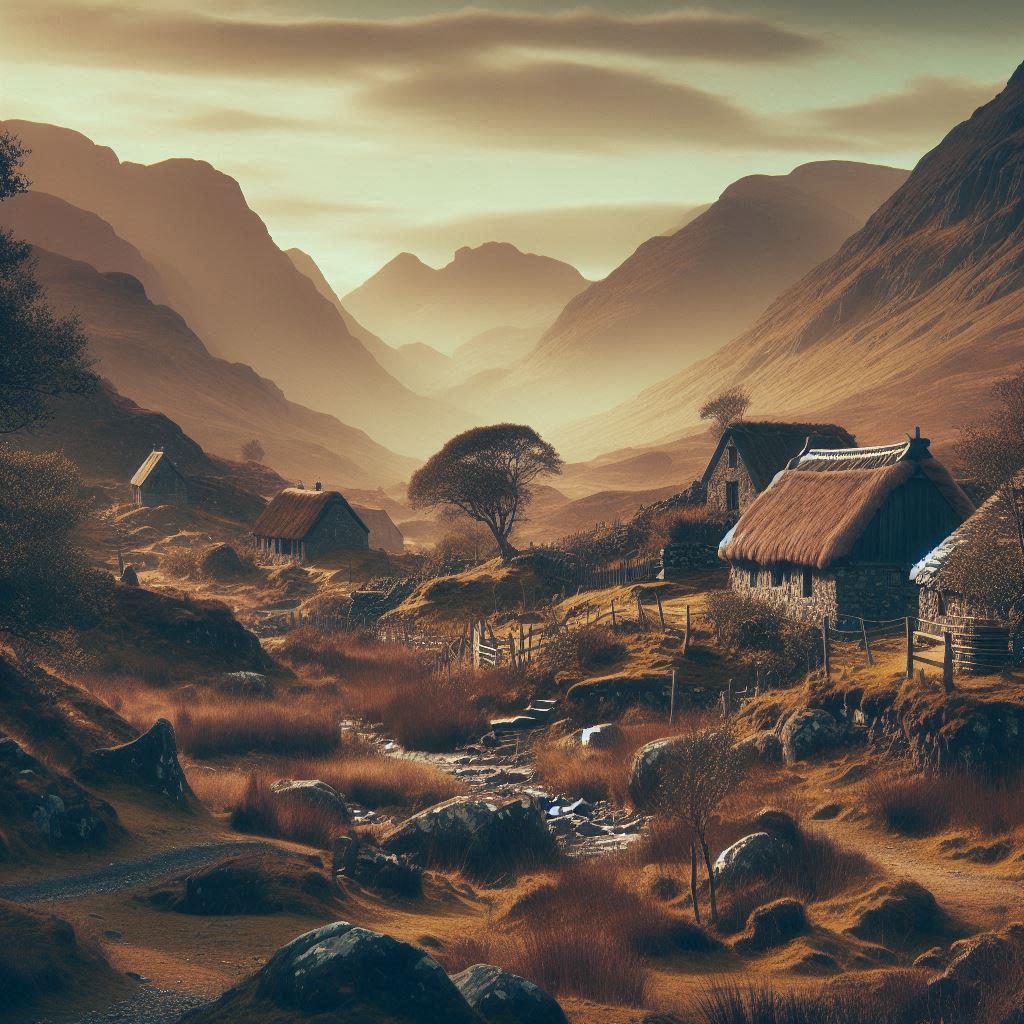
Although some uplander legends tell of them once living in marshy lowlands or at lush lakeshores of void gardens in the dark ages. But when the world was shaped, some ended up in high-altitude areas. Some at vast plateaus, others at rough hilly foothills, or their void gardens served as tops for mountains. It’s said that back then, mana still leaked from within; thus, some settlements started to dig and carve their way down to the astral. Others say they simply continued their habits from their time in the void.
Their history is marked by legendary battles, heroic figures, and the ever-present struggle for survival. It’s only a few that tell of when Ljostari sank and Mt. Ljostia erupted into Mt. Vula, as well as the birth of Arisen and Liches. This is mostly because those had very little impact on their upland cultures.
Regardless, they all have a history of isolation, leading to the development of unique traditions and languages. Through countless centuries, their conflicts with n-erectus, lowland peoples, and rival uphill clans have shaped their warrior culture and societal structure.
Their two greatest unites ever were during the backing of the realm, as they hoped it would settle age-old feuds. But even at the high kings coronation, their old habits cracked the surface, and factioning again began to build. In fact, all that the realm brought was page after page of written suggestions to follow. Thus, uplanders as such ignored the law of the realm and candled things the old ways, regardless of the high kings pledges and commands.
What really united most of them was the great invasion. It only took a few razed and pillaged uplander settlements, and news ran along rims as fast as astravellers could escape or legs could carry them. When the uplanders realised the situation, they united and swarmed the invader supply camps and patrols. Successfully controlling most upland, they made things easy for the 2nd alliance.
Skjald El Mary
Cartography
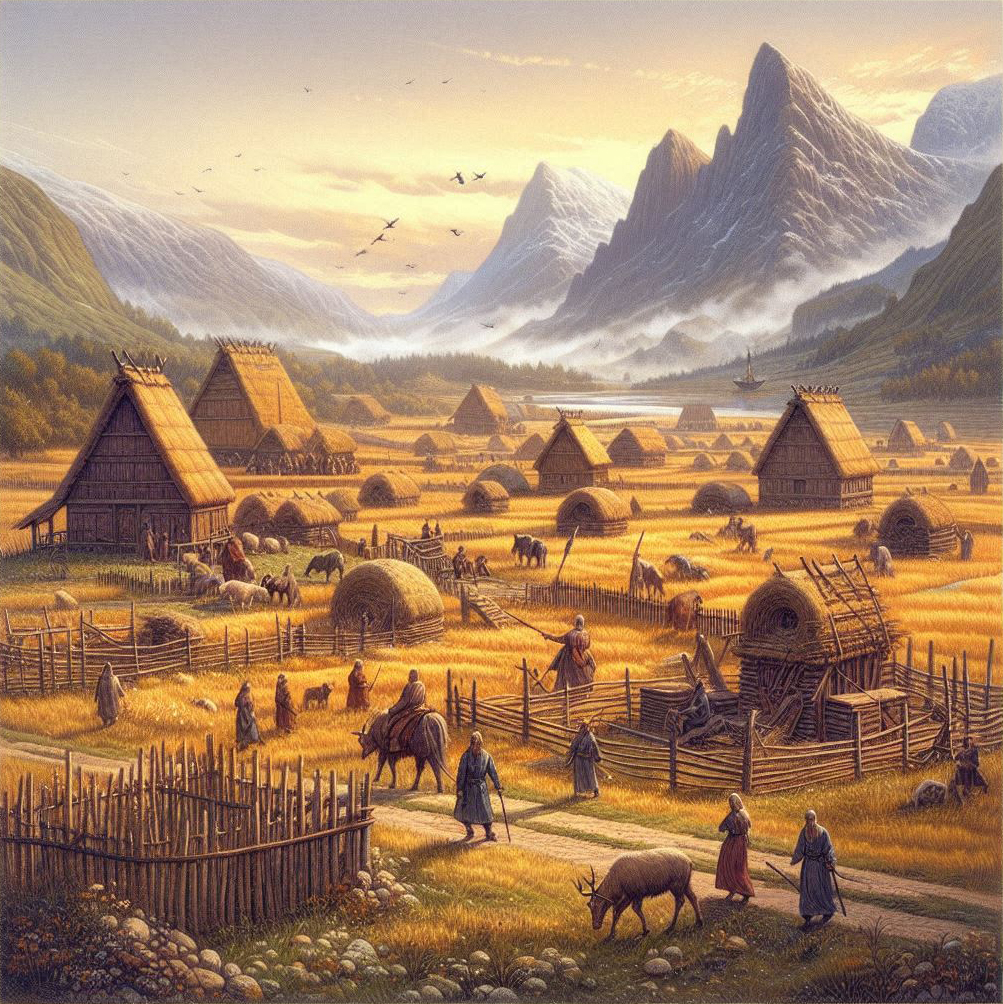
Uplander settlements are spread out across the entire world and live in all climates. They are strategically positioned on hilltops, at mountainsides, in valleys and kettleholes, at riverbanks or lakesides, in deep caves or carved clefts. All serving as defensive structures and cultural centres, these fortified clanholds and villages are designed to withstand attacks and provide security for their inhabitants.
Skjald Kazumix
Organisation
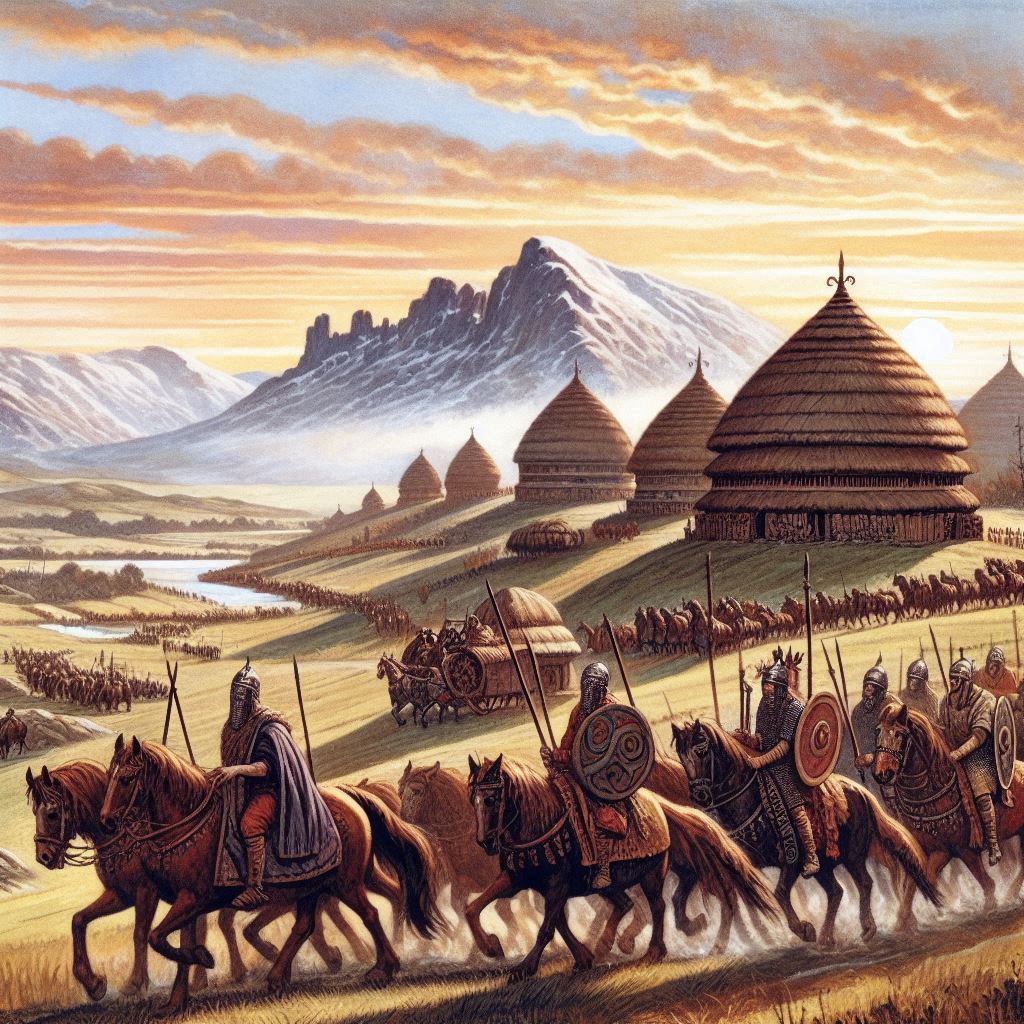
As they span the entire world and all climates, most upland cultures enjoy a settled lifestyle in farmsteads, hamlets, villages, or small towns. Each settlement governing itself, and only meeting with others if need be. The specific nature of the settlements depends on the altitude, climate, and available resources, such as:
- Altitude: Higher altitudes generally have shorter growing seasons and harsher climates, which could limit agricultural possibilities. This might necessitate smaller, more closely clustered settlements for mutual support.
- Terrain: Mountainous regions offer limited arable land. Thus, some develop terrace farming or other innovative techniques to maximise food production.
- Resources: Availability of water, firewood, and building materials influences settlement location and size.
Skjald Sejrik
Special
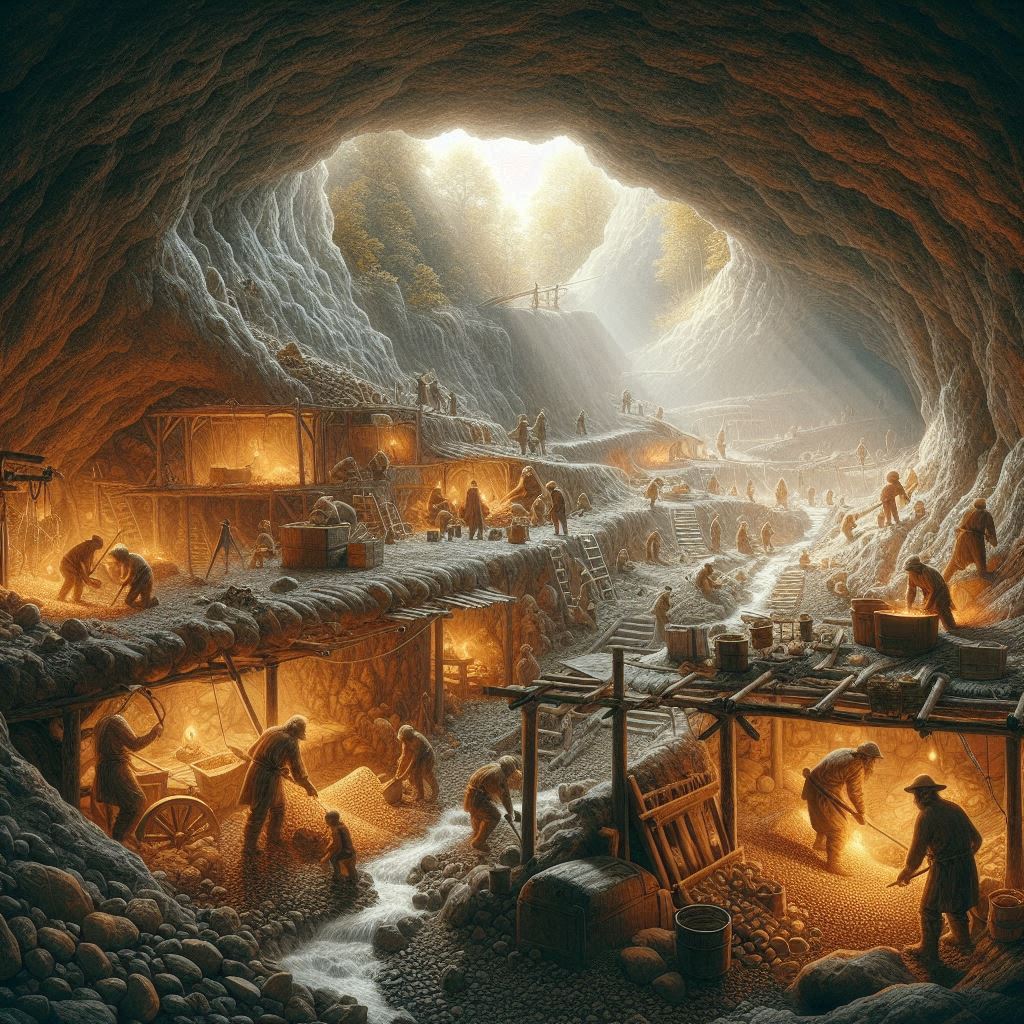
Uplanders possess unique skills in mountain warfare and deep knowledge of upland combat herbs, and many have a strong urge to mine deep into the world.
Skjald El Mary
Last Updated on 2024-10-20 by IoM-Christian
